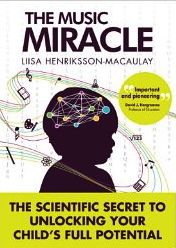 Babies learn to understand speech based on its musical properties. This is why babies who engage in music training learn to speak and communicate much better and faster than other babies. Toddlers who engage musically have fewer tantrums and bigger vocabularies; and children who learn music starting between birth and seven (when 95 per cent of brain growth takes place) significantly improve their general intelligence as a result.
Babies learn to understand speech based on its musical properties. This is why babies who engage in music training learn to speak and communicate much better and faster than other babies. Toddlers who engage musically have fewer tantrums and bigger vocabularies; and children who learn music starting between birth and seven (when 95 per cent of brain growth takes place) significantly improve their general intelligence as a result.
Here are my next two tips on how you can engage musically with your child.
7. Play the "Catch the higher bird" game
Sing two different notes – with any kind of sound, from the classic "lah" to a bird-imitating "tweet". Ask your child to tell which note is higher, "closer to the bird".
Although this exercise can be tricky to begin with, you can make it easier by putting your hands very high above your head when you sing the higher note, as if you're trying to catch the bird that is very high up. And when singing the lower note, show as if you are catching a bird that is at the level of your head and in front of you.
Scientists have found that the better your child is at recognising which note is higher, the better their reading skills are. This may sound strange at first. But children do not learn to read by seeing letters – they learn to read by hearing the sounds in speech, and then connecting the different sounds with different letter combinations. This is why the method of phonics is so effective at teaching children to read. Interestingly, studies show that music training is just as effective as phonics at helping your child comprehend the cryptic scribbles known as the written word.
8. Play the "Musical moods" game
This game is a bit like musical chairs with a twist. Play the beginning of any song in your iTunes or CD player and recognise if it is in major or minor. (In layman's terms, songs in the major key sound happy, and songs in minor sound sad.) If the song is in major (happy), jump up and shout "Yeehaa!". If the song is in minor, quickly sit down on the floor and pretend to cry. The first one to correctly identify the mode gets a point, and at the end of the game, the one with the most points wins.
Identifying whether a piece of music is in major or minor helps boost children's emotional intelligence. It makes a great party game, provided that there's at least one musically trained adult who can supervise whether the children get it right. Early learners often confuse the mode with tempo, thinking that a fast song in minor is happy, or that a slow song in major is sad.
Liisa Henriksson-Macaulay is the founder of the early music education programme Moosicology and author of bestselling parenting title The Music Miracle: The Scientific Secret to Unlocking Your Child's Full Potential available from Amazon.
For more information on how you can help your child thrive through music training, please go to Moosicology.